Paris counts thousands of publicly visible clocks. They adorn municipal buildings, stations and churches; they stand at crossroads to guide passersby; they decorate the city’s covered passages. Like Paris’s metro entrances, street lights and drinking fountains, they are at once works of art and useful tools. But sometimes, they fail in the latter task. Look up as you walk around the city, and you might spot examples of such beautiful failures. That’s exactly what I did, to bring you twelve stopped clocks in the City of Light.
I: Passage Verdeau
Our first five examples are found in Paris’s covered passages, which are common in and around the 2nd arrondissement. Many of these sport clocks in a prominent position. Occasionally, these keep the time. But it seems that more often than not, they stopped years ago.
The Passage Verdeau forms the northernmost leg of a series of shopping galleries near the Grands Boulevards. Visitors here can stop in a restaurant, buy some antiques, or simply use the passage to keep out of the rain on the way from the Museum of Freemasonry to the Hard Rock Café. But they can’t tell the time unless they bring their own device.
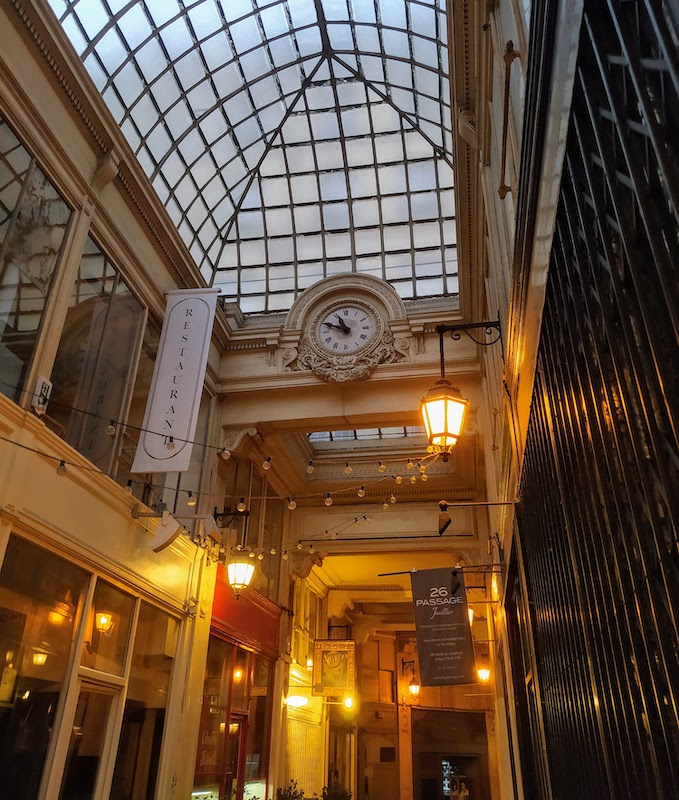
II: Passage Jouffroy
Cross the road after a walk southward through the Passage Verdeau and you will find yourself in the magnificent Passage Jouffroy. One of Paris’s most delightful passages, you can browse old postcards or shop for vintage clothes here. There is also a small supermarket, which used to be a food-only branch of British retailer Marks and Spencer, before it Brexited in 2021. But don’t go looking for the time here.
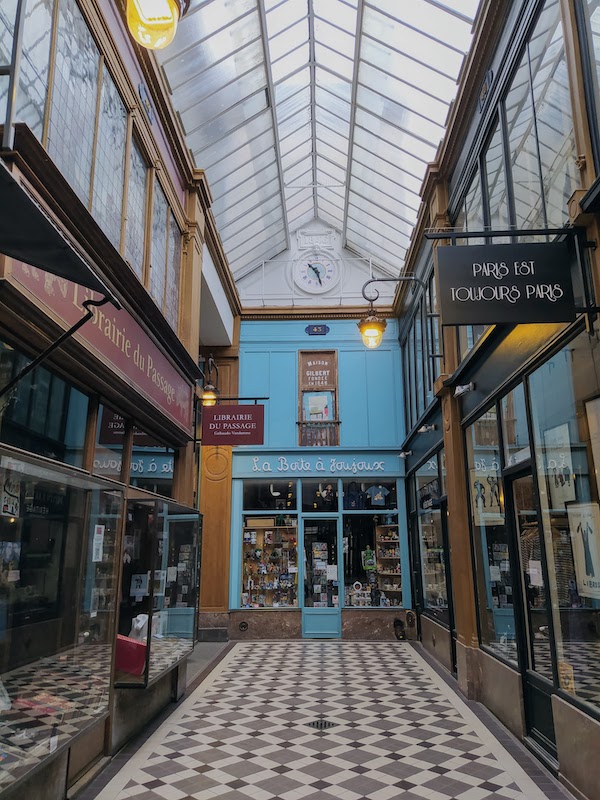
III: Passage Jouffroy (again)
The Passage Jouffroy zigzags halfway along, making room for clocks facing both north and south. Neither tells the time accurately.
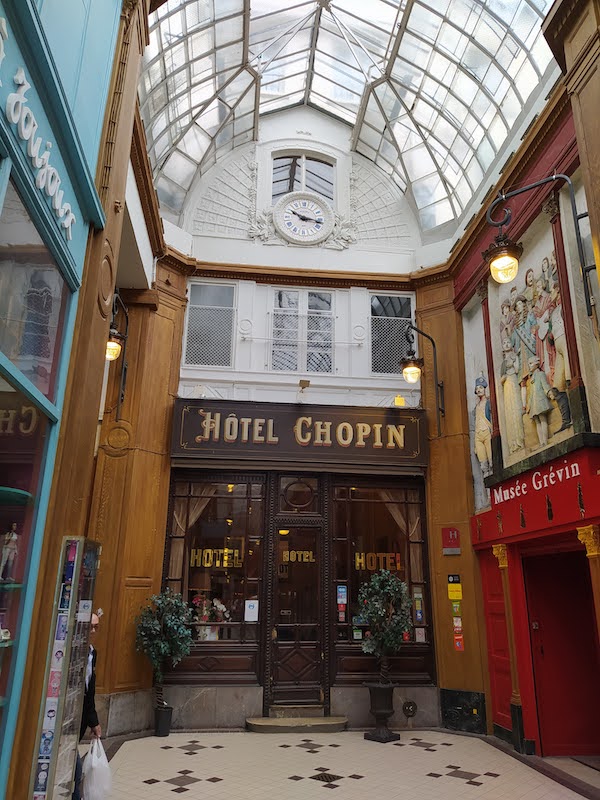
IIII: Galerie Vivienne
A seven-minute walk south, via the Passage des Panoramas, will take you to the Galerie Vivienne. This is possibly my favourite covered passage in the city. Well-lit and airy, it features mosaic tiling on the floor. Restaurant seating areas spill into the wide gallery, where they are officially considered outdoor terraces – meaning they could open during the pandemic, when indoor spaces could not. Like the Passage Verdeau and the nearby Passage du Grand Cerf, the Galerie Vivienne is especially resplendent in the winter months, when it is lit up for Christmas. But don’t expect to be given accurate information on the time of day.
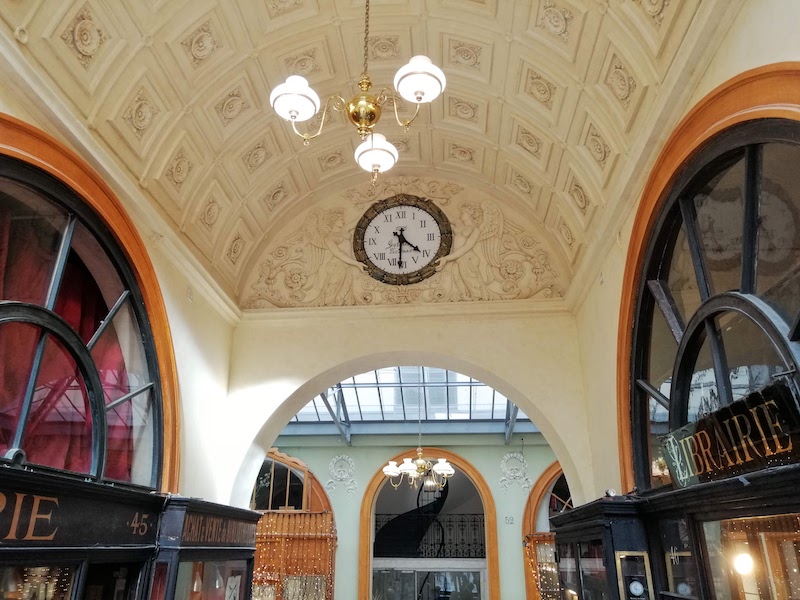
V: Passage du Bourg-l’Abbé
In most of the cases listed here, all I can say for certain is that the clock was not showing an accurate time when I photographed it. This probably means it had stopped, but perhaps not permanently. In the case of the Passage du Bourg-l’Abbé – a short, old-timey gallery near Les Halles which features a furniture workshop and a luxury meat retailer – I can say with certainty that it’s been stopped for years. Back in 2019, I traversed it almost daily. I very clearly remember the time it showed then, as it often approximated the real time during my morning commute. When I went back recently, it was still obstinately showing 9:37.
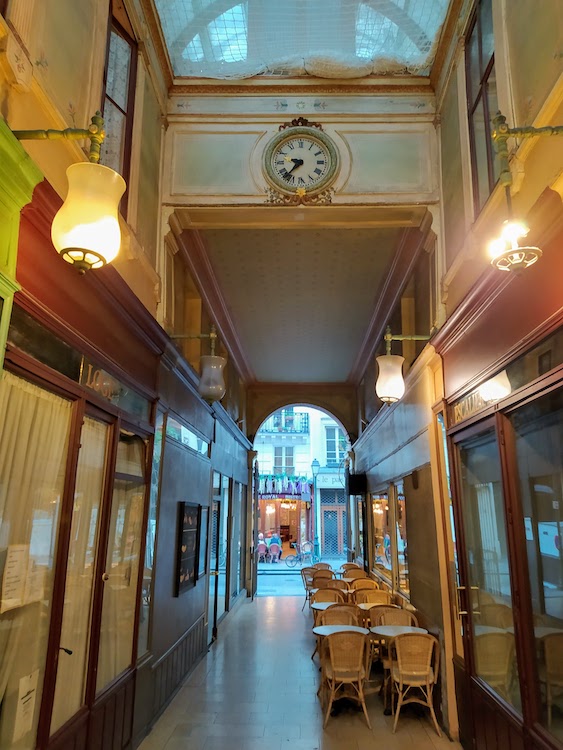
VI: Église Saint-Leu-Saint-Gilles
Many of Paris’s dozens of churches are adorned with a clock face. Many of these actually tell the time. But some only do so twice a day. The church of Saint-Leu-Saint-Gilles, in the first arrondissement, is one such church. Constructed starting in 1320, it’s famous for housing the remains of Helena, mother of Constantine the Great.

VII: Église Saint-Nicolas des Champs
First constructed in the 15th century, the church of Saint-Nicolas des Champs in the 3rd arrondissement is known for its Renaissance art and architecture. The clock on the southern façade seems to have escaped repair during the church’s recent restoration work. Still, all is not lost: clock fans can pop across the road to the collections of the Musée des Arts et Métiers.
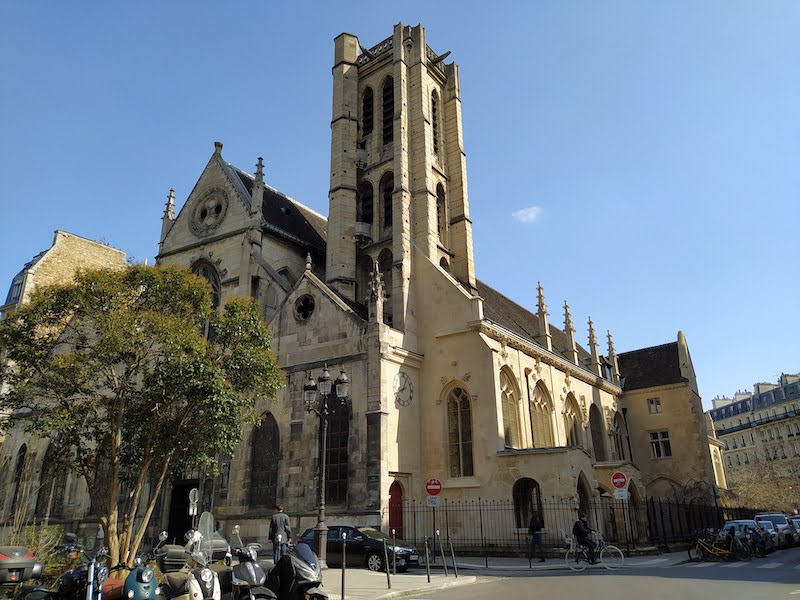
VIII: Central téléphonique Bergère
Travel a little way to the north west and you might stumble upon a large 1920s-style1 building of red brick and reinforced concrete. The telephone switchboard on the rue Bergère – le central téléphonique Bergère en bon français – also features cast-iron details, including a huge clock that tells (or rather, told) the time in 24 hours. My photo doesn’t capture them, but the numbers around the edge start from the bottom and count from 1 to 24, as you can see from this close-up taken from Paris Énigmes. However you read it, it wasn’t showing the correct time when I snapped it.
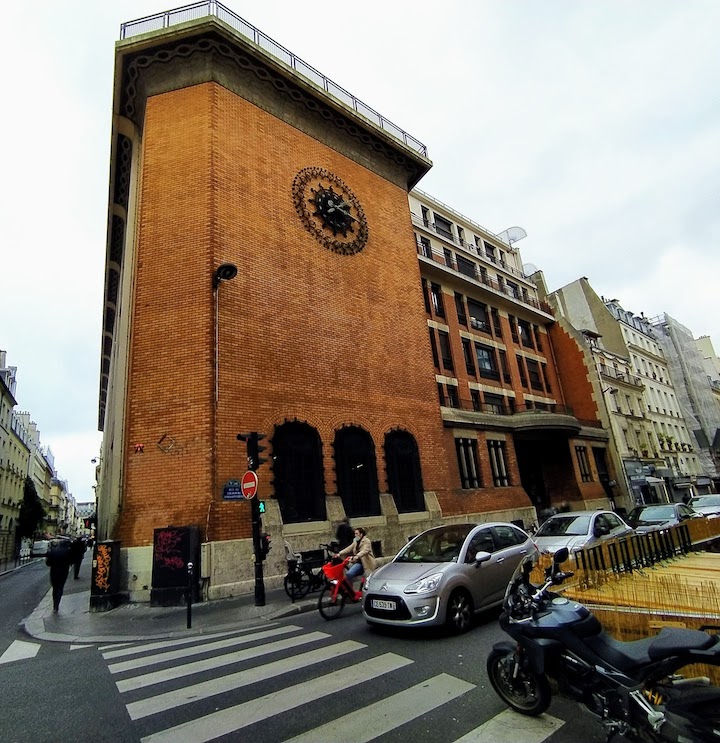
IX: Mairie du 2e
Next on our list is a municipal building. Prior to 2020, it was the mairie (city hall) of the 2nd arrondissement. When the first four districts were merged, it remained in public hands to become the Fabrique de la solidarité, which helps connect volunteers with local charities. Those volunteers would be well advised to come equipped with a watch or phone, as the clock on its façade is unlikely to help them.
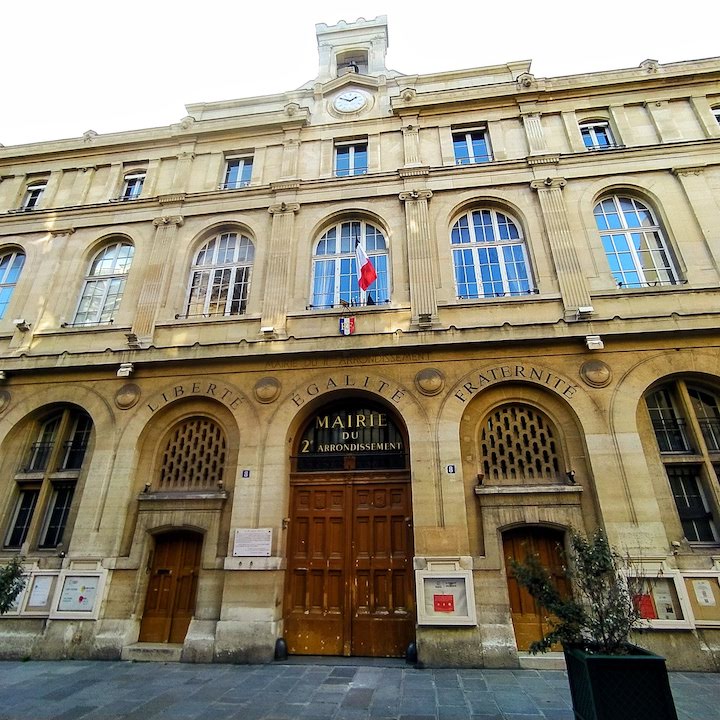
X: Quatre Septembre
Not every clock adorns a building. Some, like this one at Quatre Septembre metro station in the 2nd arrondissement, are free-standing. This one has three faces; when I visited, two were showing the correct time, but this one was not.
Please also take this opportunity to admire an original Art Nouveau metro entrance, courtesy of architect Hector Guimard, and kept in great condition by the RATP.

XI: Gare de Lyon
Rounding off our list are two of Paris’s great railway termini. At a station, it’s important to keep the time, so you’d expect the clocks to be in perfect working order. Here at the Gare de Lyon, this is true of the 1900 clock tower, which features the city’s largest clock. It’s also true of dozens of other clocks, old and new, throughout the station. But this one, on a wall above the platforms in Hall 2, is frozen in time.
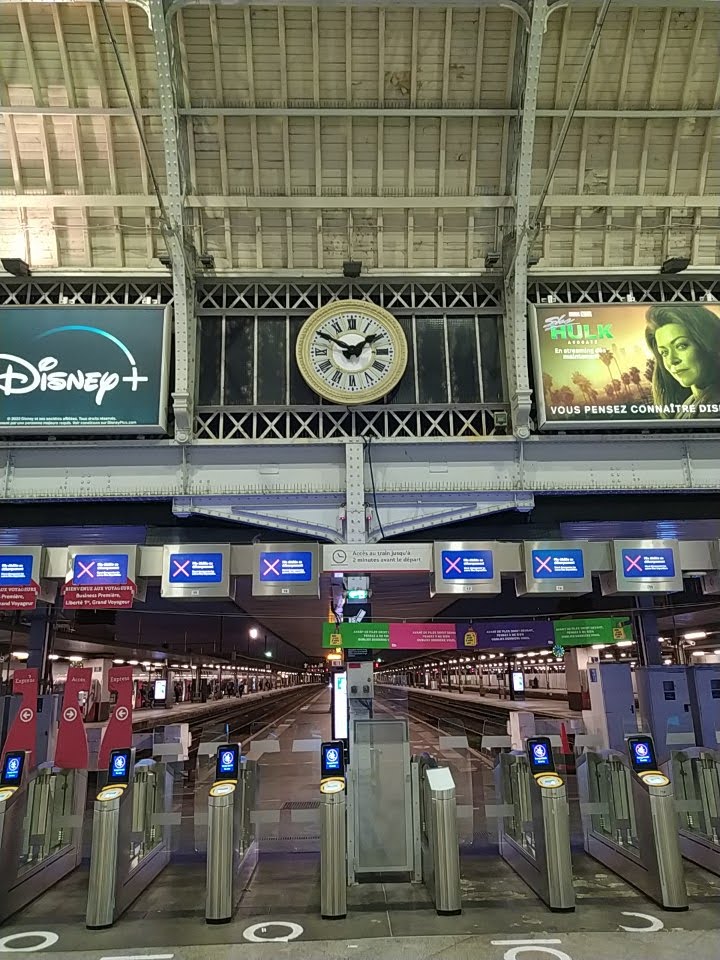
XII: Gare Saint-Lazare
A quick ride on line 14 of the metro will take you across town to Saint-Lazare, where one of the two main forecourts features a monument to timekeeping. Created by French sculptor Arman in 1985, “L’heure de tous” (“everyone’s time”) features a pile of bronze clocks of different designs, each showing a different time. But the reason this features on this list is the clock on the wall behind. Nobody expects the clocks in the sculpture to read the correct time, but the same cannot be said of the clocks on the wall of a major railway station.
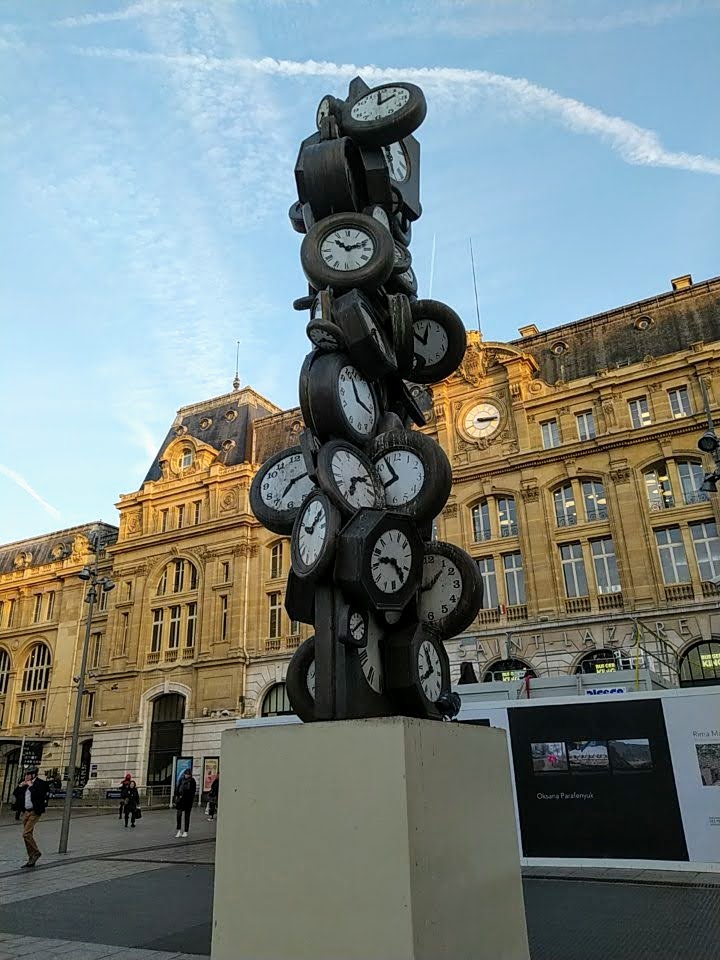
With that, we’ve come to the end of our time together today. If you enjoyed this look at 12 stopped clocks, please stick around! Get in touch to tell me about stopped clocks where you are. And by subscribing to email updates below, you’ll be sure not to miss my other stories of the streets, railways and buildings of the most beautiful city in the world.
-
In fact, it was built just before the First World War, but it was a typical example of 1920s architecture: it was a pioneer. ↩
 Fabric of Paris
Fabric of Paris